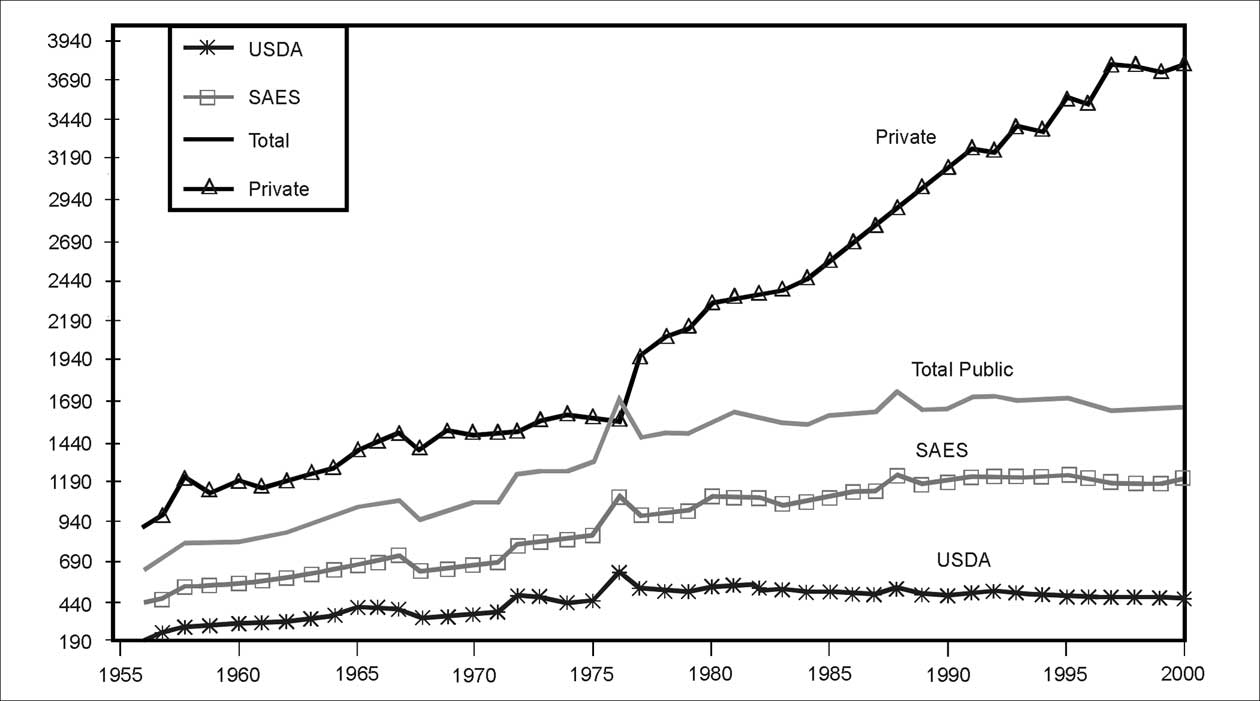
| Previous | Return to table of contents | Search Reports | Next |
| « Back to weltagrarbericht.de | ||
134 | North America and Europe (NAE) Report
The share of public agricultural research funds given to universities increased considerably from the 1970s onwards in parts of NAE, particularly the US, UK and the Netherlands, indicating a shift towards more basic research. Between 1971 and 1993, the university share of public agricultural R&D spending increased in the UK from 2.3% to 14.7%, in the Netherlands from 14.9% to 31.9% and in the US from 67.3% to 74.1%. In contrast, in the other countries analyzed by Alston et al. (1998) the average share of public agricultural R&D given to universities remained about 28% over the same period. Public R&D expenditure relative to the value of agricultural output |
|
(such as health) (Alston et al., 1998). This shift was also reflected in the declining space devoted to agriculture and natural resources in major journals (e.g., economic journals) while coverage of issues such as manpower, labor, population developments, welfare programs, consumer economics as well as urban and regional economics increased (Ryan, 2001). A meta-analysis of all the available studies of the impact (in terms of rates of return) of agricultural R&D between 1953 and 1998 found no evidence of a decline in returns to investments throughout these decades (Alston et al., 2000). These results imply that equally large returns to current spending on agricultural R&D will also be feasible in the future (CGIAR Science Council, 2005). During the 1990s agricultural R&D spending in the US increased again, from 3216 million in 1991 to 3828 million in 2000 (in 2000 international dollars), representing 16.1% and 16.6% of the global total, respectively (CGIAR Science Council, 2005). The US is also increasing funding for more basic agricultural research (Danford, 2006). Privatization of R&D |

Figure 4-5. Funding for agricultural research in the US (thousands of constant 1984 dollars; SAES = State Agric. Expt. Stations). Source:
Huffman and Everson, 2006.
| Previous | Return to table of contents | Search Reports | Next |
| « Back to weltagrarbericht.de | ||